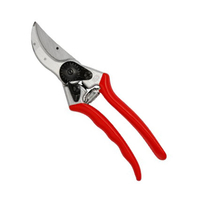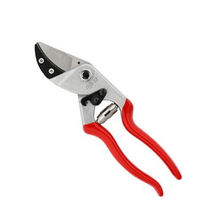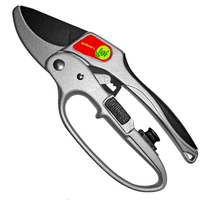How to choose the right shears for the job — advice from garden experts
The low down on pruning shears
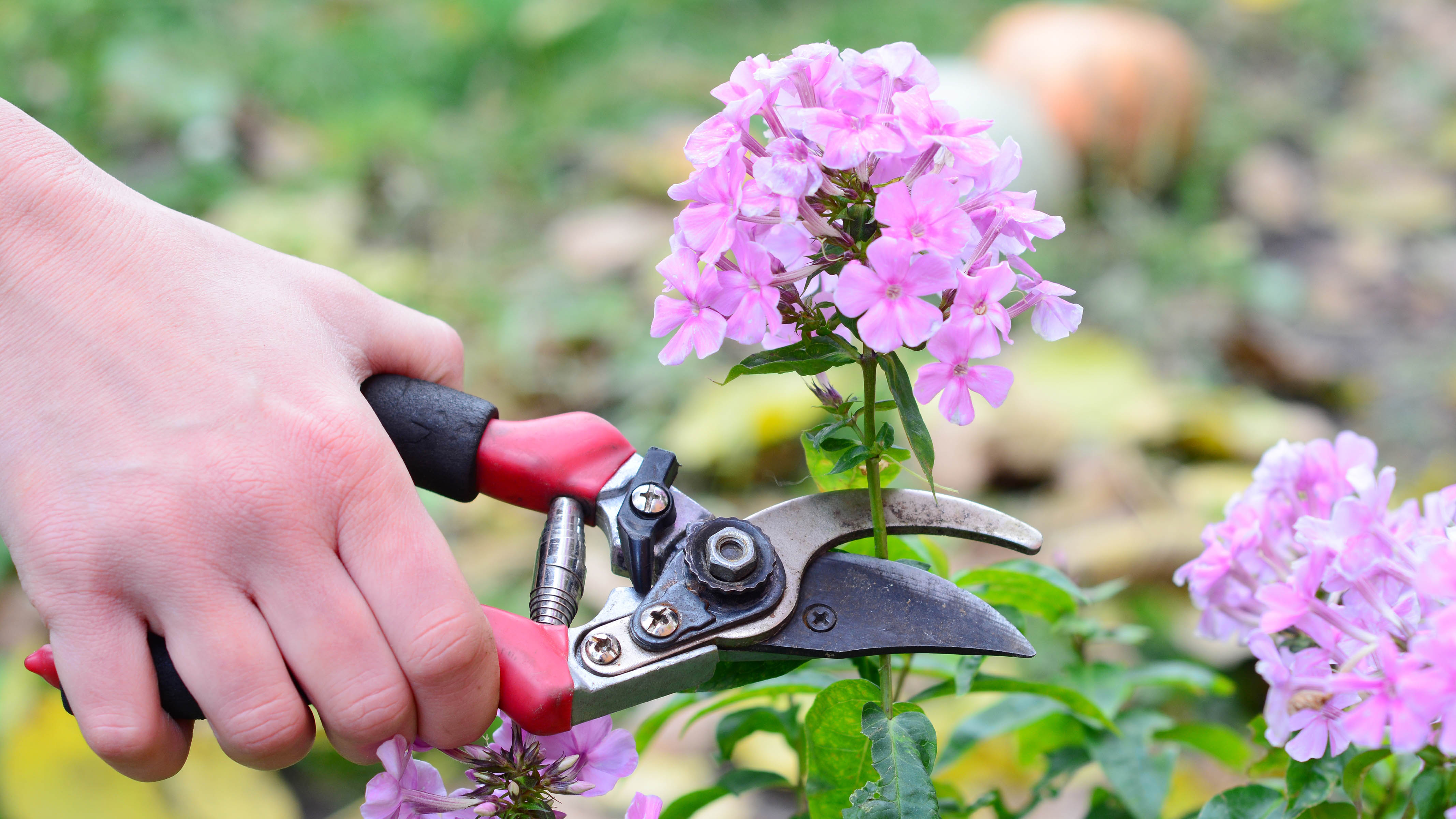
Whether you like to potter about from time to time, or are out in your patch come rain or shine, every gardener will need a pair of the best pruning shears to keep their plants in good order.
However, although removing deadwood and pruning your plants into shape is an essential gardening task, not all pruning shears are the same, and you could unknowingly be damaging your plants by using the wrong tool.
Here, with advice from garden experts, we look at four types of pruning shears, how their blades differ, and which is the right choice for what job.
The types of pruning shear

If you’re looking for your first pair of pruning shears or have an old pair that is damaged or lost among the shrubbery, it can be difficult to know which type of pruning shears to choose — especially when you’re faced with a row of different products at your local hardware store or garden center.
However, there are four types of pruning shears, each with a different type of blade and purpose. So, when you break it down, it’s easier to know what to choose for the job at hand.
If you already own a pair of pruning shears, but don’t know which type you have, they are probably bypass pruners. They are widely used in the garden and have blades that look similar in appearance to scissors, as they ‘bypass’ each other.
Apart from bypass pruning shears, there are also anvil, ratchet and straight-blade pruners. So, let’s dive in and explore the different types of pruning shears in more detail.
Sign up to get the BEST of Tom's Guide direct to your inbox.
Get instant access to breaking news, the hottest reviews, great deals and helpful tips.
1. Bypass pruning shears
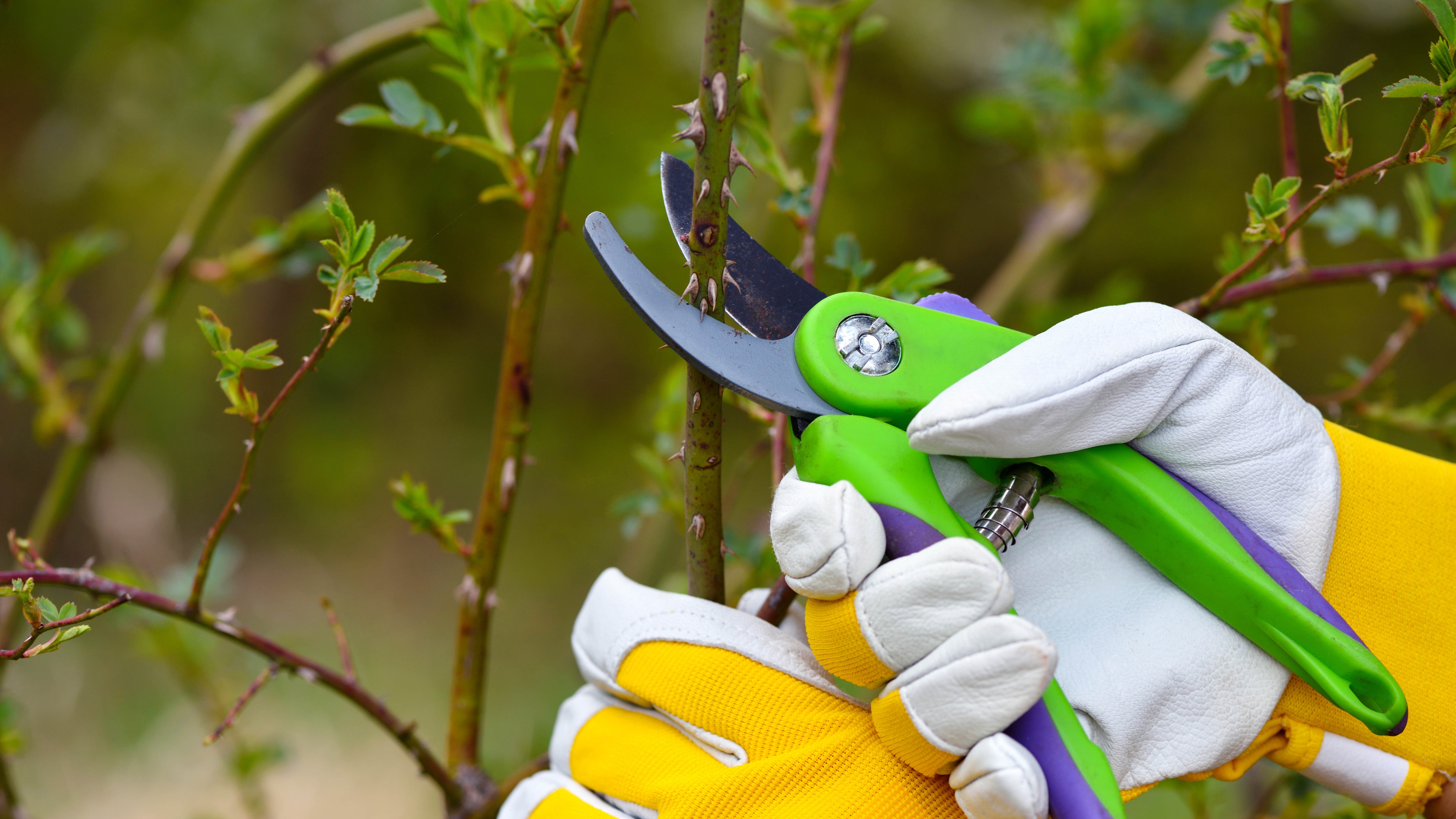
If you want to buy one pair of pruning shears, you should choose bypass shears above all else. They are a multipurpose tool that should be in every gardener’s tool shed. Tammy Sons, founder and CEO at TN Nursery says, “The curved blades of bypass shears glide past each other in a scissors-like motion which produces clean and precise cuts.”
What are they best for?
Bypass pruning shears should be used to cut live stems, as the clean cut allows the plant to heal quickly. Steven Corcoran, CEO at Lawn Love, also says you can use them to cut any stem or branch up to 1-inch thick. Otherwise, they will struggle to make a clean cut.
You can use bypass pruning shears on any living plant material, such as a living tree or shrub; they can also be used for deadheading, cutting flowers, and making cuttings.
Maintenance
If you keep your bypass pruners clean and sharp, they should give a clean and healthy cut that doesn’t damage the plant, while extending the life of your pruning shears.
The Felco F-2 bypass pruner is one of the most popular of its type among garden experts. Plus, it's rated the Best Professional-Grade Tool in our best pruning shears buying guide. The heavy-duty pruner is incredibly well made and has an ultra-sharp blade. Just be sure not to loss it in the shrubbery, as it should see you through years of use.
2. Anvil pruning shears
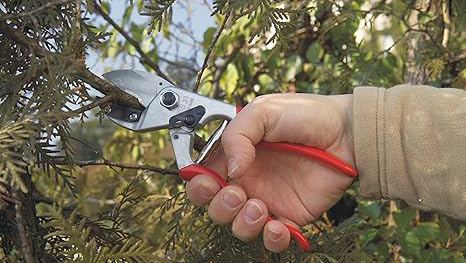
Anvil pruning shears look much heavier than bypass shears, and the blades are different. Luke Dejahand, garden expert and CEO at Crown Pavilions, says, “An anvil has one blade that cuts against a flat surface, which is typically better for cutting dead wood.”
Anvil pruners crush rather than cut and are, therefore, unsuitable for some tasks as they can damage the plant.
What are they best for
Rather than cutting fresh stems, they are best reserved for cutting dead wood, as the blade can bruise and crush live plant matter. So, reserve your anvil pruners to cut through thick, dead timber and wood-like stems.
Maintenance
Anvil pruners can soon become covered in gunk and sap as they crush stems, so for optimal results keep them clean.
This Felco anvil pruner has a very sharp blade and a rugged design and is recommended as the Best Anvil Pruning Shear in our best pruning shears buying guide. The hardened steel blade, metal anvil and wide grip smoothly cut through 1-inch thick sticks.
3. Ratchet pruning shears
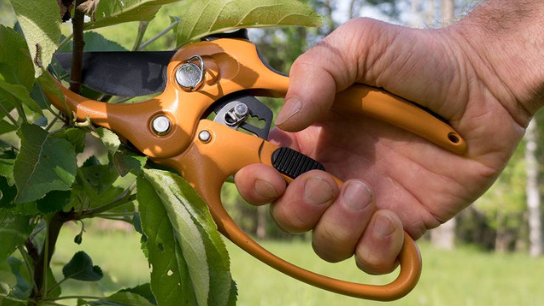
I’ve never owned a pair of ratchet pruners, but Matt Moniz, landscaping and garden expert at Maverick Landscaping, explains that they are similar to anvil pruning shears, except they have an “ingenious mechanical twist”.
Rather than cutting in one swoop, Moniz explains that ratchet pruners cut in stages, which enables the cut to be completed using less power. "The blade bites in and then ratchets down in steps until the cut is complete,” he says.
This makes them an ideal tool for people with less hand strength, or those suffering from arthritis.
What are they best for
Moniz says that ratchet pruners are intended for thick woody stems and can “tackle branches which would be tough with bypass or standard anvil shears.”
He recommends they are used when extra strength is needed, especially during long pruning sessions. However, he adds, “They tend to be slower and less efficient for a quick cut or fine prune.”
Maintenance
Keeping the ratchet mechanisms cleaned and oiled is key to their smooth operation.
These ratchet pruning shears give you added power to cut through thick branches up to 1-inch thick, with the ratchet mechanism. Crafted with heavy-duty carbon steel blade they offer extended durability and sharpness.
4. Straight-blade pruning shears
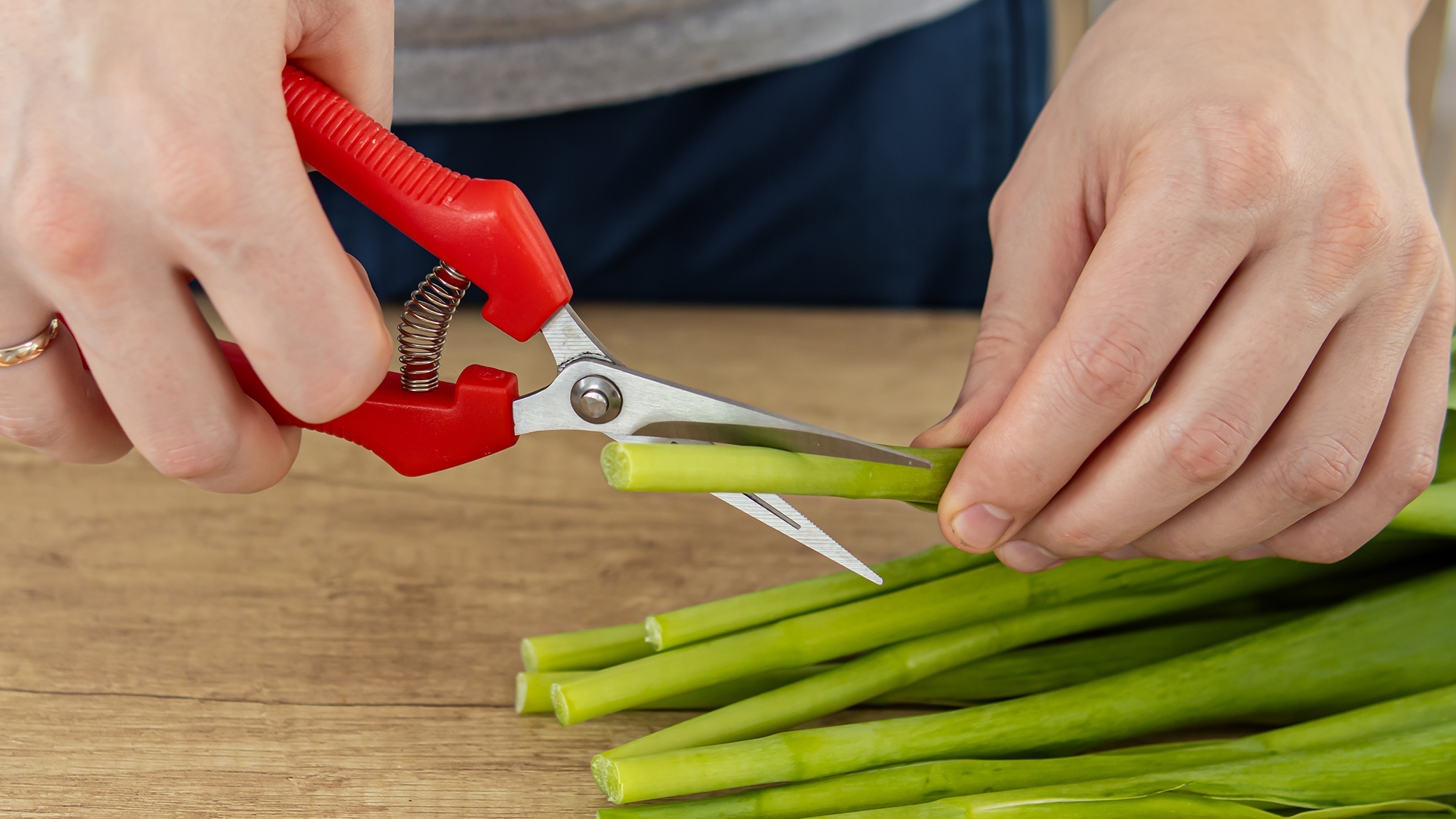
As the name suggests, straight-blade pruning shears, or snips, have fine, straight blades. So, rather than tackling tough tasks, they are best for intricate work. Moniz says the advantage of using this pruning tool is accuracy, “You can get into tight spaces without damaging other vegetation around it.”
Corcoran adds, “They are sturdier than garden scissors, but due to their small size, they can’t handle big stems.”
Therefore, they are not the correct tool for cutting woody stems or thick green branches.
What are they best for
As an owner of a plant nursery, Sons always has a pair of pruners to hand and uses straight-edge pruners to trim herbs and houseplants.
Moniz also suggests using them to deadhead flowers and harvest vegetables. They will also come in handy if you fancy a go at topiary.
Maintenance
These snips must be kept very sharp and clean since any sap build-up quickly dulls their edge.
These 6-inch pruning snips are designed for shaping, repetitive trimming and intricate cuts in tight spaces. The fully hardened stainless stell blades have a precision-ground edge that stays sharp through heavy use.. They also feature an Easy Action™ spring that gently opens the blades after every cut, helping to reduce hand fatigue.
More from Tom's Guide

Camilla Sharman has worked in publishing and marketing for over 30 years and has covered a wide range of sectors within the business and consumer industries both as a feature, content, and freelance writer.
As a business journalist, Camilla has researched articles for many different sectors from the jewellery industry to finance and tech, charities, and the arts. Whatever she’s covered, she enjoys delving deep and learning the ins and out of different topics, then conveying her research within engaging content that informs the reader. In her spare time, when she’s not in her kitchen experimenting with a new recipe, you’ll find her keeping fit at the gym. In the pool, stretching at a yoga class, or on a spin bike, exercise is her escape time. She also loves the great outdoors and if she’s not pottering about in her garden, she’ll be jumping on her bike for a gentle cycle ride.
You must confirm your public display name before commenting
Please logout and then login again, you will then be prompted to enter your display name.
